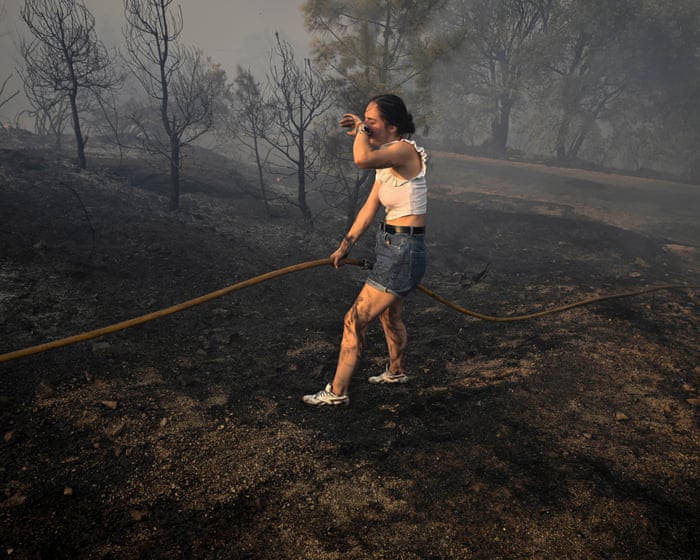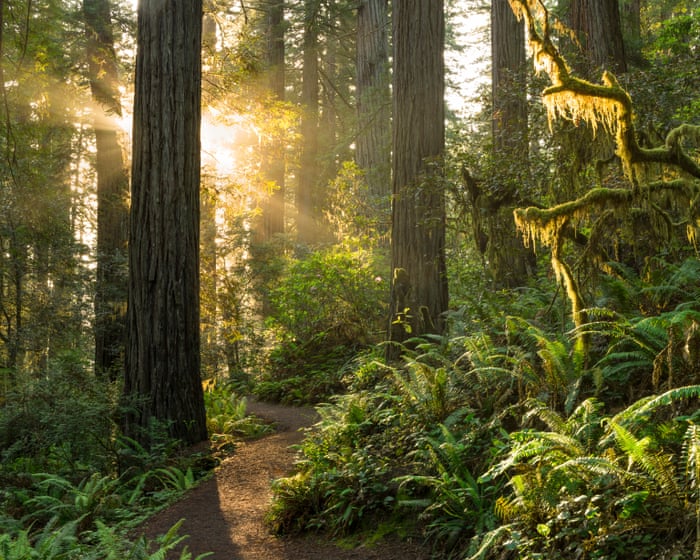This Saturday, the residents of Paüls will celebrate their patron saint Sant Roc with a special mass, followed by a shared meal at stone tables, traditional jota dances, and a deep collective sigh of relief.
Last month’s wildfire—which turned the night sky an eerie orange, scorched the surrounding hills, and consumed 3,300 hectares (8,154 acres)—brought back painful memories of the 2009 blaze in nearby Horta de Sant Joan that claimed the lives of five firefighters.
“People were terrified everything would burn and they’d lose it all,” says Enric Adell, mayor of this small Catalan mountain town. “They feared being trapped with no way out.” That kind of fire, he adds, brings a fear unlike any other.
The charred trees on the hills above the village square stand as a stark reminder of what could have been—were it not for the courage of hundreds of firefighters, including Antonio Serrano, who lost his life. Shifting winds and sheer luck also played their part.
“When a fire hits,” the mayor says, “it leaves its mark.”
This summer’s wildfires have scorched Spain from Galicia and Castilla y León in the northwest to Catalonia in the northeast, from Madrid’s suburbs to Extremadura in the southwest, all the way to Andalucía’s beaches in Tarifa.
Alongside panic and the now-familiar sting of smoke, this year’s fires carry a sense of déjà vu. The deadly summer of 2022 exposed Spain’s growing vulnerability to the climate crisis. One unforgettable image from that July showed Ángel Martín, a 53-year-old from Tábara, using his excavator to try to stop flames from reaching his town—only for the machine to be swallowed by fire as he fled, his clothes burning. Martín, a beloved local figure, suffered burns over 80% of his body and died three months later.
Three years on, Spain is once again on the defensive.
“Wildfires are one consequence of climate change, which is why prevention is crucial,” Environment Minister Sara Aagesen said this week. “Spain is especially vulnerable. We have resources now, but with scientific evidence pointing to worsening impacts, we must strengthen and professionalize them.”
### On the Climate Emergency Frontline
While politicians trade blame, experts argue that debates over firefighting aircraft miss the bigger point. The current fires, they say, were entirely predictable—and highlight the urgent need to rethink land use and management in a continent at the forefront of the climate crisis.
“This year’s fires are on par with 2022 and 2023,” says Marc Castellnou, head of forestry for Catalonia’s fire service and a wildfire analyst at the University of Lleida. “Since 2017, we’ve seen a shift toward more extreme fires. This isn’t new—it’s happening because climate change is altering our landscape.”
[Image descriptions:
1. A man fleeing flames during a wildfire in Ourense province.
2. A Paüls resident reunited with his horse after it bolted in fear of the fire.]The situation is clear. When a country faces back-to-back annual heatwaves that grow longer each year—combined with decades of rural depopulation leaving vast areas untended, overgrown, or converted to single-crop farming—massive wildfires become inevitable and increasingly difficult to control. As one Spanish scientist recently put it: “We have all the ingredients for the explosive situation we’re seeing now.”
Wildfires are now more often caused by accidents or carelessness and spread rapidly due to both landscape changes and climate change. Cristina Montiel, a professor at Madrid’s Complutense University and an expert in wildfires and land use, says Spain’s firefighters and emergency services are doing an “extraordinary” job preventing even greater disasters. However, she argues the real issue lies with society as a whole.
Despite yearly fires and overwhelming evidence, she says, “we are not—and do not want to be—aware of the danger we’re living in.” If people truly understood the risk, she adds, they would take steps to protect themselves. Fifty years ago, most wildfires were set intentionally. Today, they’re increasingly caused by accidents or negligence and spread uncontrollably due to two key factors: landscape changes and climate change.
The combination is explosive. Heavy spring rains this year led to abundant plant growth, which successive heatwaves then dried out, turning neglected areas into tinderboxes. The problem is worsened by “flash droughts,” which can rapidly parch even well-irrigated farmland—a phenomenon expected to become more frequent as global temperatures rise.
Paüls is a prime example. Its population has declined over decades, and fewer people work the land due to dwindling economic returns. “If 100 people once farmed here, now there are 30,” says Adell. “If policies don’t change and conditions stay this tough, soon there’ll be almost no one left.”
Years of neglect have left ravines, gullies, and pine forests overgrown—turning them into ticking time bombs. The mayor says last month’s fire was unstoppable: “We saw there was no way to contain it.”
While preparation is key—and as the old saying goes, “fires are put out in winter”—the challenge now is reversing decades of poor planning and neglect that left landscapes vulnerable and allowed housing developments in high-risk areas.
Montiel warns that fixing these problems won’t be quick or easy. “If things started going wrong 50 years ago, we can begin improving them now,” she says. “But don’t expect changes today to yield results in just two summers. These things take time.”
### ‘Fire Flocks’ of Sheep and GoatsThere are already some encouraging signs that people are starting to understand the message. Sixteen years after the Horta de Sant Joan fire, local shepherds approached Catalan firefighters to ask how they could help prevent future wildfires.
This led to the creation of the Ramats de Foc (Fire Flocks) program, where shepherds work with firefighters to graze sheep and goats in high-risk areas with dense undergrowth.
A herd of goats, guided by nomadic shepherds, grazes near urban areas in Santa Susana, Catalonia, creating natural firebreaks.
By clearing these areas, firefighters gain better access, and with less undergrowth, fires are easier to control if they start.
“We don’t need more helicopters or firefighters,” says Marc Arcarons, who coordinates the initiative, launched in Girona in 2017 by the nonprofit Pau Costa Foundation. “Buying 200 more helicopters won’t solve the problem. It’s about prevention and management.”
The program also helps shepherds earn more by allowing them to sell their meat and cheese at a premium under the Ramats de Foc label, showing consumers that their purchases support environmental preservation and traditional farming.
Around 120 shepherds now participate, managing about 8,000 hectares (20,000 acres) in Catalonia. Similar programs are being planned or implemented in the Canary Islands and Andalucía.
Arcarons explains that rural depopulation and reduced reliance on woodlands since the 1960s have transformed once-diverse landscapes of vineyards, olive groves, and wheat fields into dense forests.
Fast-growing, highly flammable pines now dominate, while thick undergrowth thrives. Combined with climate change and longer droughts, this has led to uncontrollable wildfires.
“It’s like a chimney,” Arcarons says. “If you keep adding wood, eventually the chimney catches fire, and the whole house burns down.”
Castellnou agrees that unless we adapt our landscapes to climate realities, we’re doomed.
“There’s no point in talking about more planes,” he says. “If we think we can just keep putting out fires with more equipment, we’re creating an unsustainable cycle—summer after summer of extreme weather and worsening fires.”
FAQS
### **FAQs About “Unlike Any Other Fear”: Wildfires Scar Spain’s Landscape**
#### **Beginner Questions**
**1. What makes wildfires in Spain different from other natural disasters?**
Wildfires in Spain spread rapidly due to dry conditions, strong winds, and flammable vegetation, leaving long-lasting ecological and emotional scars.
**2. Why does Spain have so many wildfires?**
Hot, dry summers, drought, abandoned farmland, and sometimes human negligence or arson contribute to frequent wildfires.
**3. How do wildfires affect Spain’s wildlife?**
Many animals die, habitats are destroyed, and surviving species struggle with food and shelter shortages, disrupting ecosystems for years.
**4. Are wildfires getting worse in Spain?**
Yes, climate change is making summers hotter and drier, leading to more frequent, intense, and harder-to-control fires.
—
#### **Intermediate Questions**
**5. What regions in Spain are most at risk for wildfires?**
Areas with dense forests and dry climates, like Galicia, Catalonia, Andalusia, and Valencia, are especially vulnerable.
**6. How do wildfires impact Spain’s economy?**
They damage agriculture, tourism, and infrastructure, costing millions in firefighting, recovery, and lost revenue.
**7. Can wildfires be prevented?**
Better forest management, stricter laws against risky behavior, and public awareness can reduce risks.
**8. What should I do if I’m in Spain during a wildfire?**
Follow local authorities’ instructions, avoid fire-risk areas, and have an emergency plan.
—
#### **Advanced Questions**
**9. How does climate change worsen wildfires in Spain?**
Rising temperatures and prolonged droughts create tinder-like conditions, making fires start easier and spread faster.
**10. What role does human activity play in Spain’s wildfires?**
Some fires are accidental, while others are intentional. Poor land management also increases risks.
**11. How long does it take for ecosystems to recover after a wildfire?**
Some plants regrow quickly, but full recovery of forests and wildlife can take decades, depending on the fire’s severity.
**12. What technologies help fight wildfires in Spain?**
Satellites




